Laptops for teachers is the topic of our blog post today!
As a dedicated teacher who has passionately shared knowledge in classrooms for many years, I am intimately aware of the challenges we face in our profession, particularly when it comes to choosing the right technology tools.
Just like you, I’ve juggled lesson planning, grading, and delivering engaging lessons all at the same time. I’ve experienced firsthand the frustration of a slow computer when you have a classroom of expectant students or the trouble of a bad video call during a virtual class.

In addition to my time in the classroom, I’ve spent years as an EdTech blogger, navigating the ever-evolving world of educational technology, testing and reviewing products, and keeping up with the latest trends and tools that can help us in our teaching journey.
[ Related: Best Chromebooks for Students]
This unique blend of experiences, both as a former teacher and an EdTech expert, has equipped me with a deep understanding of what educators truly need in a laptop. And so, I’ve crafted this comprehensive guide with the aim of simplifying your quest for the best laptop as a teacher. Whether you’re teaching in-person, remotely, or both, the laptop options listed here cater to all types of teaching environments, needs, and budgets.
Best Laptops for Teachers
I am a huge fan of Apple products including their powerful Macbook Pro which I am currently using to write this blog post. However, for those of you who would rather go with a non-Apple product, these laptops are definitely worth your consideration:
Our pick
Featured Alternatives
Check out today’s deals for Laptops
1. ASUS VivoBook 14
My first option in this selection and my favourite is the ASUS VivoBook 14, a laptop that has been carefully selected for its combination of performance, portability, and excellent features.
As an educator, I understand the need for a reliable laptop that can handle multitasking, has a good display for presenting and reviewing materials, and offers substantial storage space for all essential educational documents and applications. This ASUS VivoBook fulfills these needs and goes beyond with its valuable additional features.
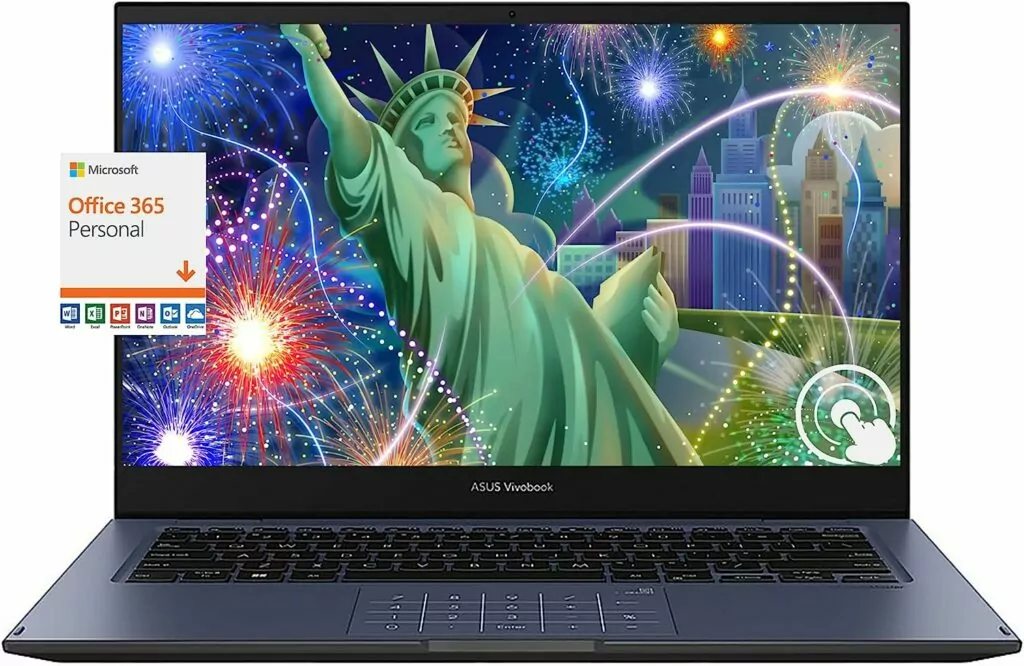
Key Features:
- Intel Celeron N4500 Processor: Offers a swift and responsive performance, perfect for handling multiple tasks such as grading, creating presentations, or researching online.
- 4GB DDR4 SDRAM and 256GB PCIe NVMe M.2 Solid State Drive: Provides ample storage space and ensures smooth running of multiple applications at once.
- 14″ HD Touch Screen: Offers a large, clear viewing area with touch capability, providing an interactive teaching and learning experience.
- Multiple Ports: Includes a variety of USB ports, a Micro SD card reader, and an HDMI port, offering wide-ranging connectivity options.
- Wi-Fi 5 and Bluetooth 4.2: Enables strong and stable wireless connections for online teaching or conferences.
- Office 365 Access: Allows you to use essential applications like Microsoft Excel, Word, PowerPoint, and provides 1TB of One Drive storage for one year.
- Portable Design: Weighing just 3.31 lbs and designed in a sleek blue, it’s perfect for teachers on the move.
Pros
- Fast and efficient processor for multitasking
- Comes with a one-year Office 365 subscription
- Large, touch-enabled HD screen
- Solid battery life (up to 9.5 hours)
- Variety of connectivity options
Cons
- Might be slightly heavier than some competing models
- Not the highest resolution available on the market
- Sound quality may not be optimal for large rooms
2. HP Stream 14
Here we have the HP 2022 Stream 14″ HD BrightView Laptop, a device I selected for its ultra-wide viewing display and reliable performance. I understand that teachers need a reliable system that can manage multiple tasks simultaneously, as well as a great screen for presentations and multimedia use. This HP Stream model ticks all those boxes and adds a bit of style to the mix with its rose gold color.
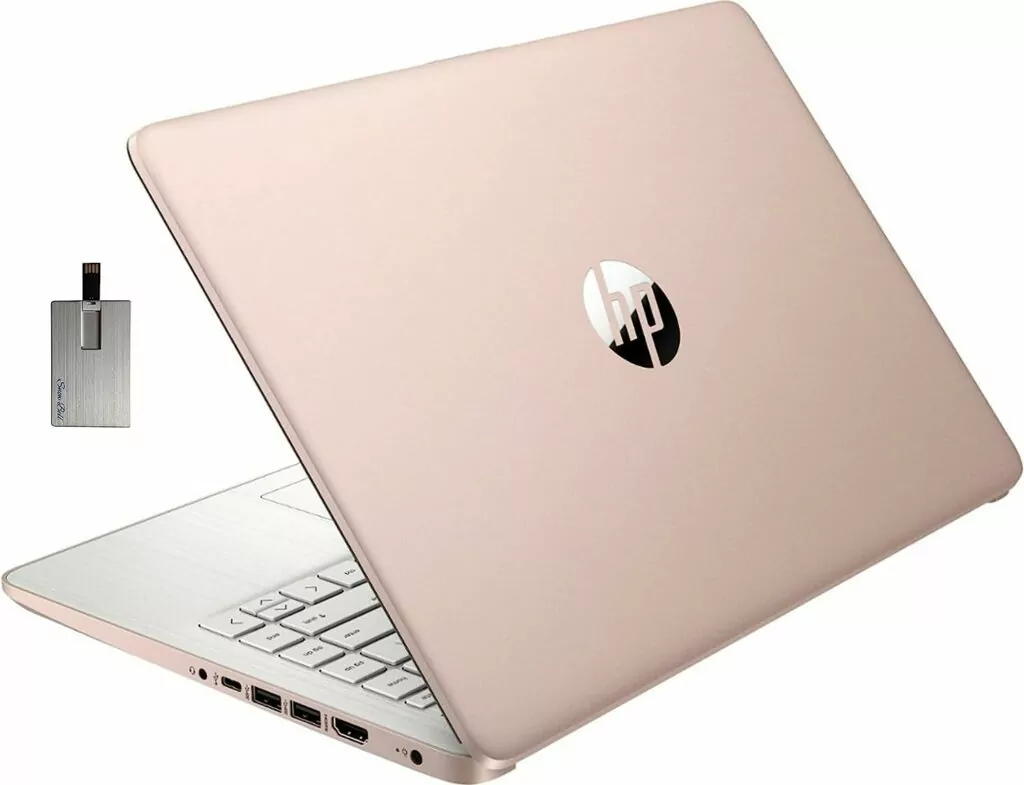
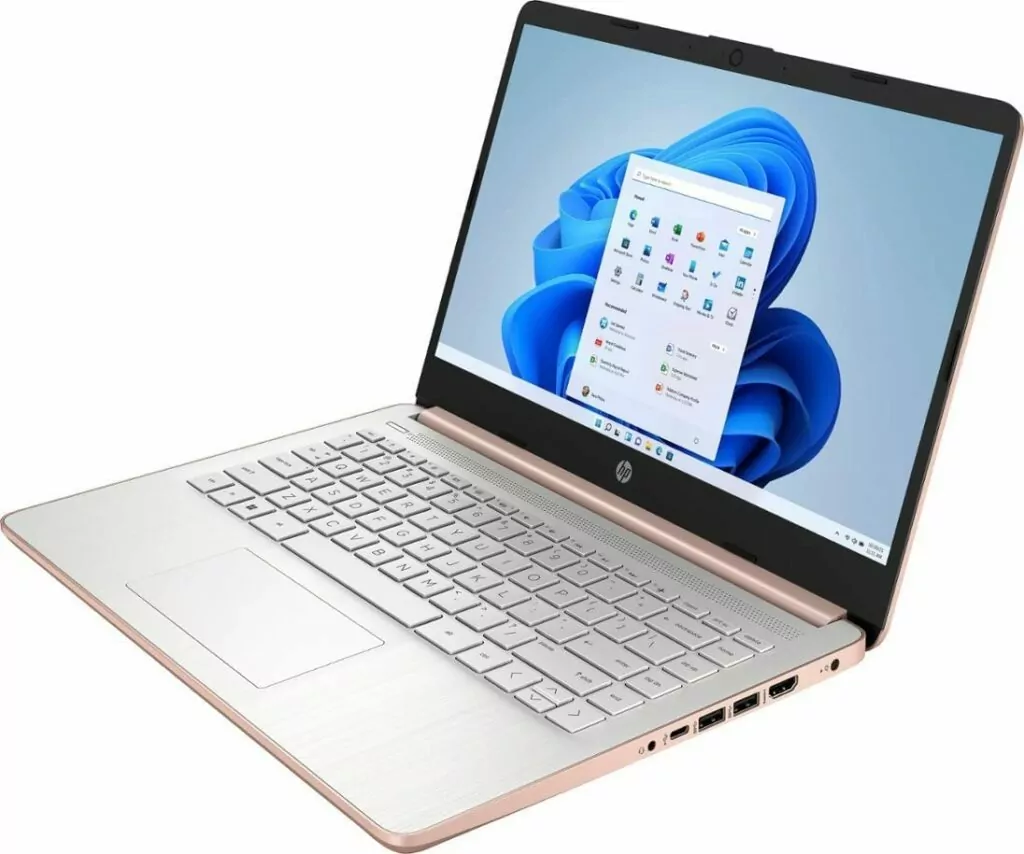
Key Features:
- 14.0-inch diagonal, HD BrightView Display: Offers an ultra-wide viewing experience, perfect for multitasking or setting up multiple monitors.
- Intel Celeron N4120 Processor: Balances performance, power consumption, and value, enabling reliable multitasking.
- 4GB DDR4 RAM and 64GB SSD: The high-bandwidth RAM allows for smooth running of various applications, and the SSD offers quick boot-up times, streamlined data management, and support for high-definition video playback.
- Intel HD Graphics 600: Provides solid image quality with shared video memory.
- Windows 11 S Included: A streamlined version of Windows designed for speed and security.
- Slim and Portable: With dimensions of 12.76″x 8.86″x 0.71″ and weighing 3.24 lbs, it’s easy to carry around.
- Additional Features: Includes multiple USB ports, HDMI, and a media card reader. Also comes with a one-year Office 365 subscription and a bonus 32GB SnowBell USB Card.
Pros
- Reliable performance with efficient power consumption
- Includes a one-year Office 365 subscription
- Portable and stylish with a rose gold color
- Comes with a bonus 32GB SnowBell USB Card
Cons
- Limited storage space may require external storage solutions
- Audio performance may not be optimal
- Windows 11 S is limited compared to full versions
- May not be suitable for heavy software
3. Lenovo 3
The Lenovo Ideapad 3 Laptop is a machine that has made its way into my recommendations due to its impressive memory capacity and high-speed processor. Whether it’s running educational apps, browsing research, or keeping up with administrative tasks, this Lenovo Ideapad 3 can handle it all with ease.
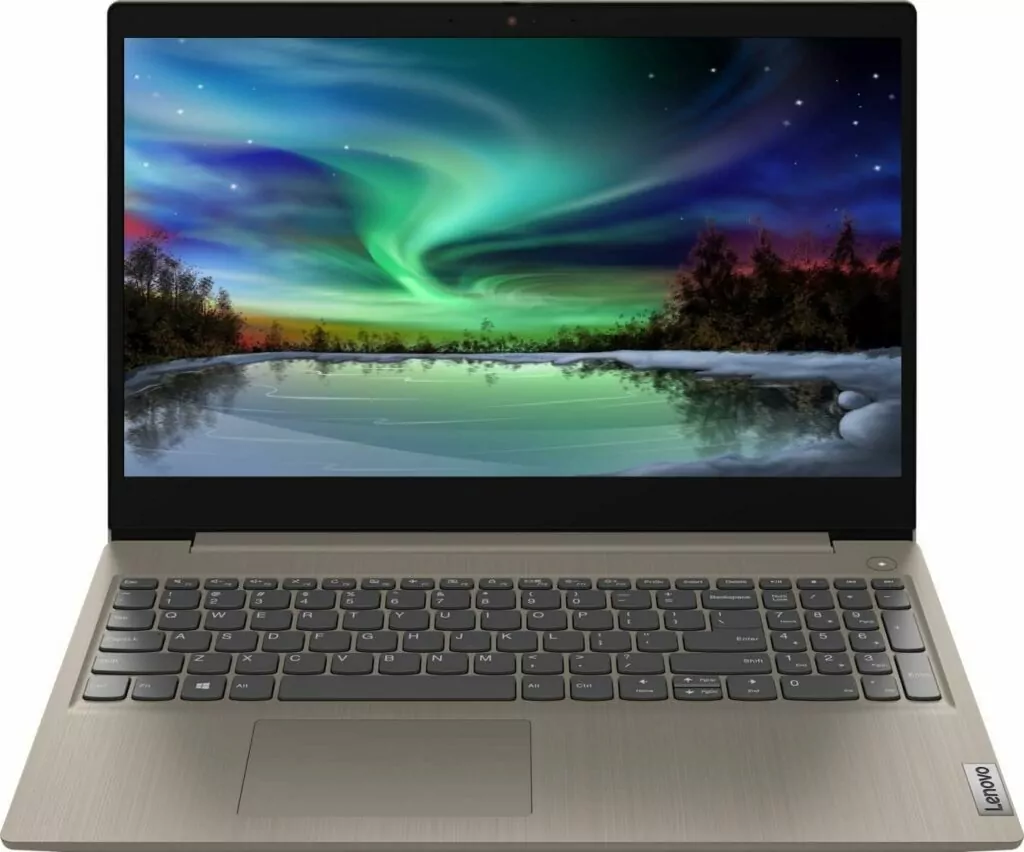
Key Features:
- 8GB RAM and 256GB PCIe Solid State Drive: High-bandwidth RAM for smooth multitasking and a fast SSD for quick bootup and data transfer.
- 11th Gen Intel Core i3-1115G4 Dual-Core Processor: Clocking at 3.0GHz and capable of boosting up to 4.10GHz, this processor ensures snappy performance for all your tasks.
- 15.6″ HD Touchscreen: With a resolution of 1366 x 768, this display offers an interactive and clear visual experience.
- Variety of Ports: Includes 2 x USB 3.2 Gen 1 Type-A, 1 x USB 2.0 Type-A, 1 x HDMI, and 1 x Combination Audio Jack, allowing a wide range of connectivity options.
- Windows 11 Home: Comes with the latest Microsoft operating system, offering improved speed, security, and a fresh user interface.
Pros
- High-bandwidth RAM and fast SSD for smooth multitasking
- Powerful 11th Gen Intel Core i3-1115G4 Dual-Core Processor
- 15.6″ Touchscreen for interactive use
- Windows 11 Home offers a modern, secure OS
- Variety of ports for excellent connectivity
Cons
- HD resolution, not Full HD
- Battery life of up to 7 hours may be short for a full workday
- Not the lightest laptop, weighing 3.64 pounds
- The Almond color may not be everyone’s preference
4. Dell Latitude E7470
Dell Latitude E7470 is a laptop that’s designed with portability and power in mind. Over the years, my experience as an edtech blogger and an educator has made me appreciate laptops that blend high performance and longevity, and the Dell Latitude E7470 certainly checks these boxes. Its combination of an Intel Dual-Core i5-6300U, 8GB SDRAM DDR, and substantial battery life makes it an excellent choice for teachers who need a reliable workhorse.
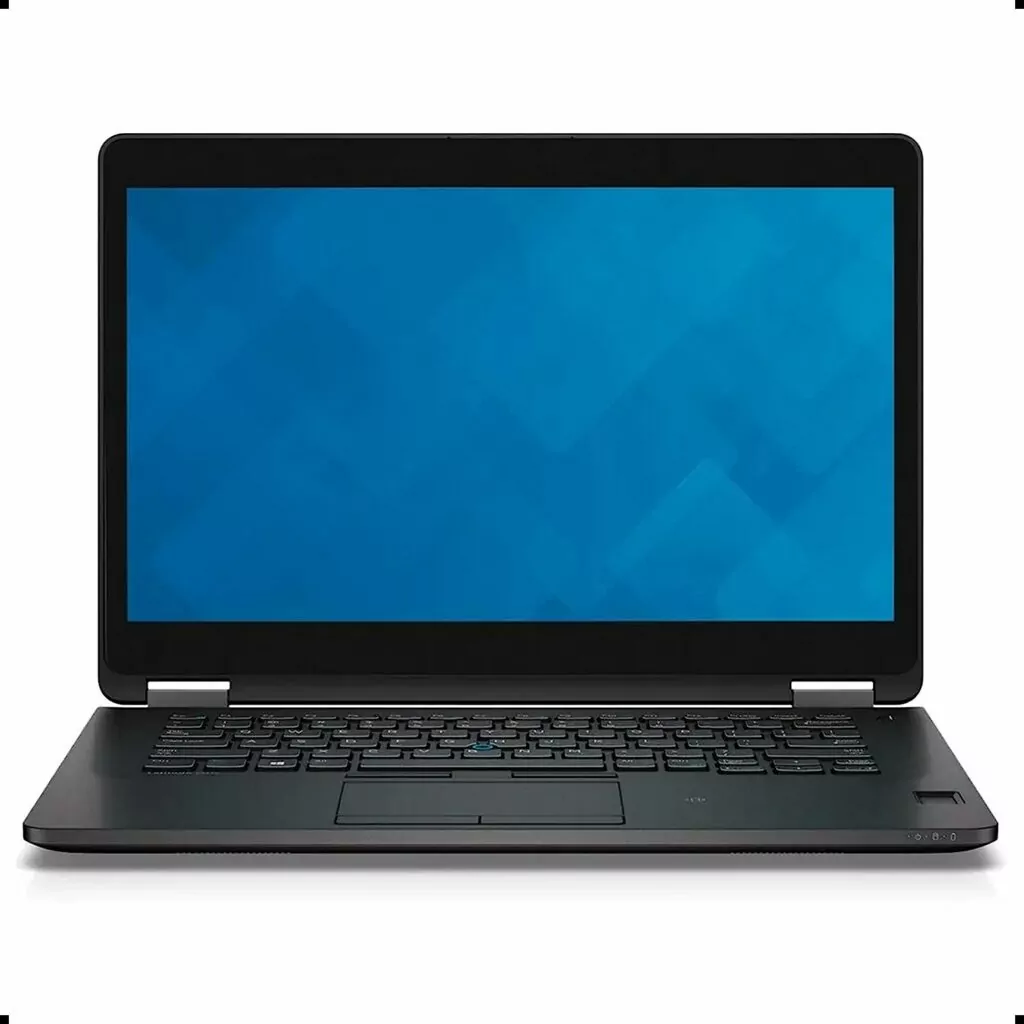
Key Features:
- Intel Dual-Core i5-6300U & 8GB SDRAM DDR: High-performance specifications that ensure smooth and efficient multitasking.
- 14.1-inch LED-backlit HD Anti-glare Display: A clear and vivid screen that reduces eye strain during long hours of work.
- 256GB SSD & Windows 10 Pro: Fast storage with plenty of space for your applications, documents, and media, combined with the professional-grade operating system.
- Rich in Ports: 3 USB 3.0 ports, an ExpressCard-54 slot, an SD card reader, and a VGA port for connecting a range of peripherals and accessories.
- Integrated Ethernet LAN & WiFi: For working from anywhere and staying connected.
Pros
- Powerful Intel i5 processor and 8GB SDRAM DDR for high performance
- Long-lasting battery life for mobile use
- 256GB SSD provides fast data access and plenty of storage
- Wide variety of ports for excellent connectivity
- Windows 10 Pro provides a stable and user-friendly operating system
Cons
- HD resolution rather than Full HD
- The laptop might be a bit bulky for some users with dimensions of 19 x 15 x 5 inches
- No Optical Drive
- Although a sturdy build, the black color may not appeal to everyone
5. Acer Aspire 5
Acer Aspire 5 Slim Laptop is a piece of technology that embodies power, performance, and portability. This laptop was selected for its impressive specs including the AMD Ryzen 3 3200U Dual-Core Processor and the Full HD IPS Display, making it a perfect choice for those who demand superior performance for both work and entertainment.
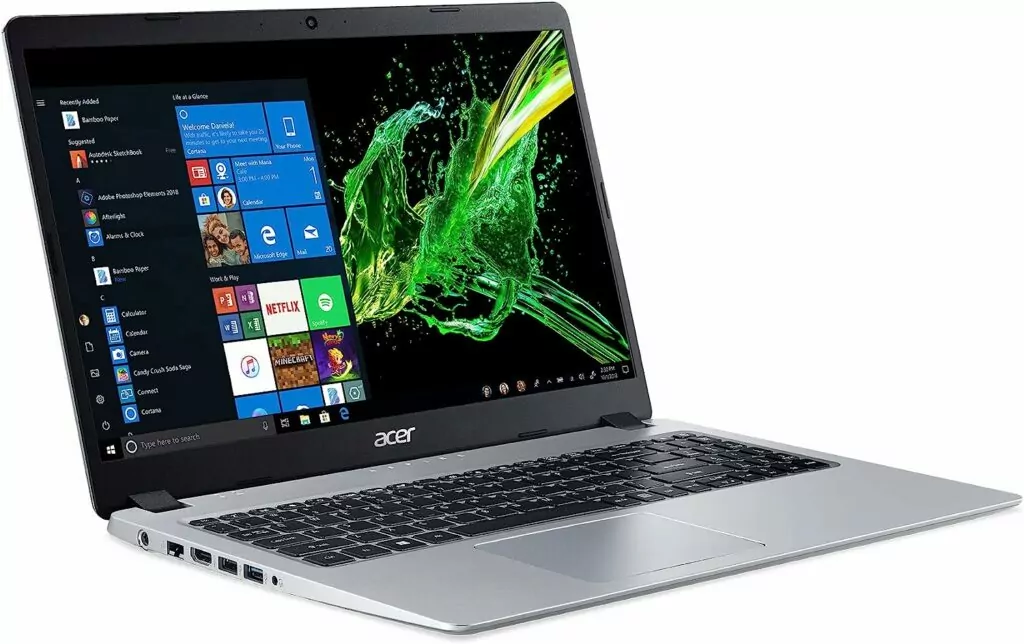
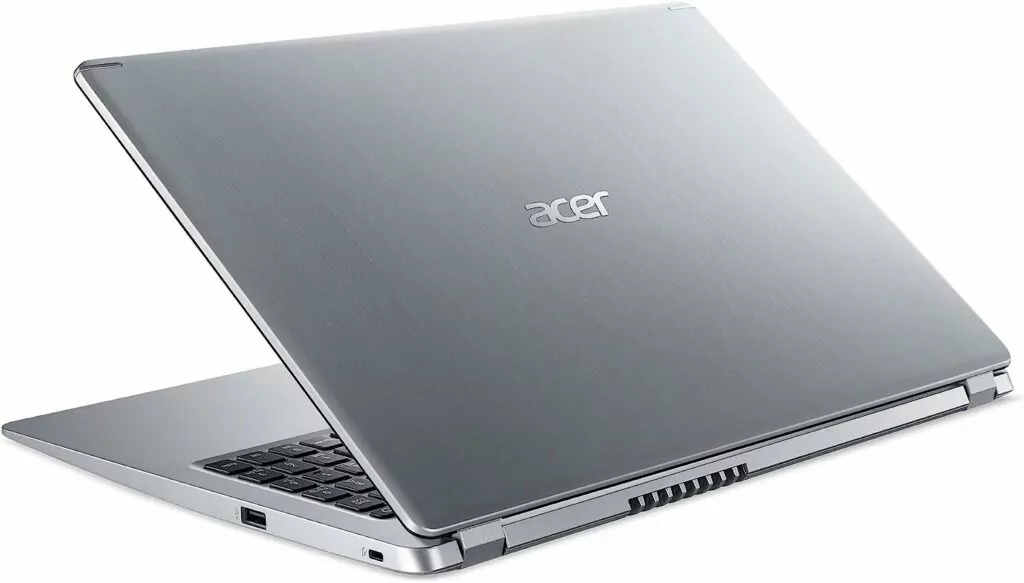
Key Features:
- AMD Ryzen 3 3200U Dual-Core Processor: Fast and efficient, with Precision Boost up to 3.5GHz for seamless multitasking.
- 15.6″ Full HD IPS Display: Providing a wide viewing experience with crystal-clear visuals on a 1920 x 1080 resolution screen.
- AMD Radeon Vega 3 Mobile Graphics: Enables smooth performance for graphics-intensive tasks.
- 4GB DDR4 Memory and 128GB PCIe NVMe SSD: Ample memory and storage for your files, documents, and applications.
- True Harmony Technology and Acer Purified Voice Technology: Ensures high-quality audio output and clear voice input with two built-in microphones.
- Connectivity Options: Offers 802.11ac Wi-Fi with 2×2 MIMO technology, 10/100/1000 Gigabit Ethernet LAN, Bluetooth 4.0, and a variety of ports including USB and HDMI.
- Back-lit Keyboard and HD Webcam: For working comfortably in low-light conditions and having crisp, clear video calls.
- Lithium-Ion Battery: Up to 7.5 hours of battery life to keep you working or playing for longer periods.
Pros
- High-performance AMD Ryzen 3 processor
- Full HD IPS display for vibrant visuals
- Long battery life
- Variety of connectivity options
- Lightweight and slim design
Cons
- Only 4GB of RAM which may not be enough for heavy multitasking
- Limited storage with 128GB SSD
- The laptop runs Windows 10 Home in S mode which might restrict software installations
- Might not be ideal for heavy gaming due to integrated graphics
Frequently Asked Questions (FAQs) for Teachers Buying a Laptop:
1. What are the key factors to consider when buying a laptop for teaching?
- Performance: Look for a laptop with a powerful processor (like Intel i5 or higher, AMD Ryzen 3 or higher) and at least 8GB of RAM for smooth multitasking.
- Storage: SSD storage (128GB or more) is recommended for fast boot times and data retrieval.
- Display: A display of at least 13 inches with high resolution (Full HD or 1920×1080 pixels) is ideal for tasks like video conferencing and creating presentations.
- Battery Life: A laptop with a long battery life (at least 7 hours) can help you stay productive throughout the school day without needing to recharge.
- Connectivity: A good laptop should have a variety of ports for different devices, and strong WiFi capabilities.
2. Do teachers need a laptop with a touchscreen?
A touchscreen is not a requirement for teaching, but it can add an extra level of interactivity during lessons, especially for teachers who make use of digital whiteboards or annotations during their lessons.
3. Is a laptop with a webcam necessary?
Yes, especially in the current climate of online teaching. A built-in HD webcam is essential for video conferencing, online classes, and virtual parent-teacher meetings.
4. How important is the weight and size of the laptop for teachers?
Teachers often move from classroom to classroom, or need to carry their laptops home for grading and lesson planning. Therefore, a lightweight and compact laptop is more convenient.
5. Is a high-end graphics card necessary for teaching?
Unless you’re teaching subjects that require intensive graphical applications (like video editing or 3D modeling), integrated graphics should be sufficient for everyday tasks such as word processing, internet browsing, and video conferencing.
6. What operating system is best for teaching?
This can depend on your personal preference and the systems used by your school. Both Windows and Mac OS have a wide variety of educational software available. Chromebooks, running Chrome OS, are also popular in many schools due to their simplicity and cost-effectiveness.
7. What software will I need as a teacher?
This depends on the subjects you teach, but common software includes office suites (like Microsoft Office or Google Workspace), video conferencing tools (like Zoom or Microsoft Teams), grading software, and potentially specialized software for subjects like math, science, or art.




